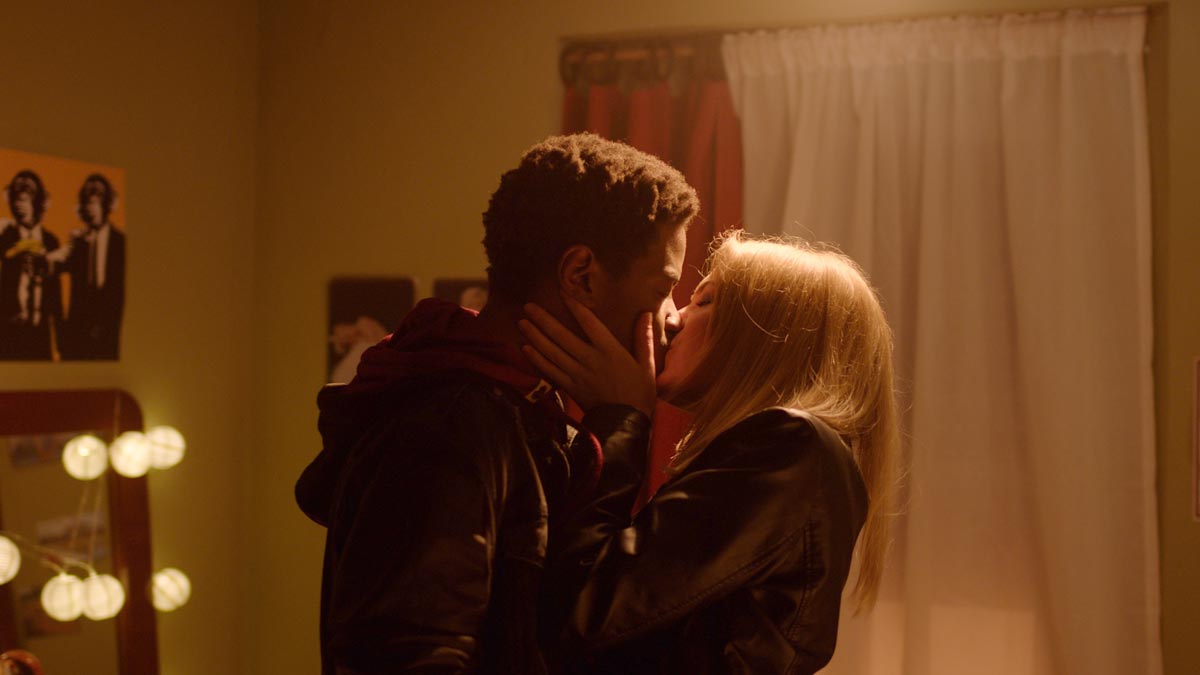My story with Final Cut Pro X is very similar to many other directors and editors that bought it when it came out and couldn’t understand how it worked. Why, Apple, WHY?! So, after a few (not that many) hours, FCPX went to the app cemetery, the place where installed (but not used) software rest. After learning non-linear editing with Premiere (the first 1.0 version back in the nineties), using ImMix VideoCube and many other editors in the last two decades, I thought that I was too old to think different.
Like many others, I pretended that FCP7 (or legacy as it’s called now) was enough for my needs. During that period, at beActive, my production company, we edited two feature films and one feature-length documentary using FCP7, while slowly trying other options for the inevitable upgrade: Media Composer or Premiere CC – but none of them were appealing to us, so we kept using the legacy FCP as our NLE of choice, avoiding opening the X and giving it another try.
The Eureka moment came later in 2012 when one of the editors I worked with, suggest to me to edit a music video I directed a few days earlier with FCPX. Very reluctantly, I accepted, mainly because this was a short-form piece, all editing and mastering could be done in the same box and the editor seemed very comfortable with the software. Sitting next to him for a few days to give notes, I could notice how fast he worked and how easy it was to move things around and try new things. The project went flawless and I got intrigued with the X edition.
Later that Christmas, I shot a video with my kids and decided to try FCPX. It was a personal project, no deadline, so nothing at stake. I imported the 7D footage, started dragging the footage to the timeline, moved things around and got frustrated. Again! Although, this time I gave it a little more time and saw a few Ripple Training tutorials to try to understand how this beast works. A couple of hours later, I couldn’t believe how fast and easy it was to assemble and trim footage. I crossed the wall and finally saw why Apple changed the NLE video-editing paradigm.
Things got clearer to me when I was sitting on the edit room supervising another feature film that was being cut in FCP7. Everything I was doing on my personal video with one or two clicks was taking too long on the legacy FCP. Suddenly, X started to make sense and 7 started to feel old and outdated. After this experience I went to investigate more about the X evolution, downloaded a few tutorials and started to plan the switch. Later in 2013 we started using X for short-form and in 2014 we moved the long form projects to X too, finally abandoning FCP7. RIP!

Harland Williams and The Stand Ups Director Nuno Bernardo
The first long-form project we used to test our new workflow, built around FCPX, Resolve and ProTools, was a two one hour documentary series about Stand Up comedy for Irish broadcaster TV3, which I directed. The Stand Ups explores the trials and tribulations of modern comedy while following five stand up comedians in their attempt to make it big at the famous Edinburgh Comedy Festival. The documentary mixes talking heads of some established comedians with fly on the wall segments from the new comedians, previously broadcasted TV footage and a few stand up comedy shows shot multicam.

Robbie, Colm, Chris, Alison & Niamh
During a 5-month production we used several cameras including a Sony FS700 (recording ProRes in an Odyssey 7Q), Blackmagic Cinema Camera, Blackmagic Pocket Cinema Camera, Canon C300 and 7D. Our frame size was 1920×1080 and we shot everything at 23.98, except the C300 that was 24 (more on that later). ProRes 422HQ was our codec of choice and the 7D footage was converted to ProRes using 5DtoRGB. Our DIT technician (also assistant editor) used FCPX to log all the footage. Everything was imported on a single library using the new library model introduced on 10.1.

The Stand Ups documentary timeline in FCPX (Right click for larger image)
We also followed a Proxy workflow so everyone could work separately at different places using only the proxies. A hard drive with a copy of the library and the proxy footage was given to the Editor, second assistant director and myself. Whenever new footage arrived, the Library was updated and the proxy video files directory was updated.


Stringouts with metadata
The first assistant editor was using keywords and the metadata features of FCPX that allowed the editor to easily identify stories, themes and string-outs. Basically, we were doing manually what a tool like Lumberjack System now does automatically (we are testing Lumberjack and we plan to use in our upcoming documentary productions). We used multicams for editing the comedy shows and compound clips to organize the string-outs.
Everything was going smoothly until Apple came out with 10.1.2 and modified the library model. Suddenly there was no way to have a separate folder for proxies so our proxies workflow was gone. I know, never upgrade a system during a project! By September 2014 we synced the different cuts and versions and all the footage in one library before moving forward. During this process, we had problems importing around 30 video files (out of hundreds of files and 5 TB of footage). FCPX simply refused to relink a few files.
We also had problems with resolution, as our off-line proxy editing timelines were set to 960×540. We needed to go back, and manually change the resolution of the multicam files. When we were able to consolidate and conform all edits in a master library, we had lost a couple days but we are able to get back on track. After the 10.1.2 release, we stopped sharing Libraries and importing timelines this way and started swapping XML files between editor, director and assistants.

The whole documentary in DaVinci Resolve (right click for larger image)
We did a picture lock by November 2013 and then grading started. We were now moving the project to Davinci Resolve. When we imported the XML from FCPX, Resolve was not detecting the right files. In some segments of the edit, Resolve was choosing other clips or just putting black slug instead of the original video. We tried this process a few times but the outcome was always the same.
After loosing three days we found our problem. We imported the C300 footage from the cards using the Canon XF Plug-in. FCPX converted it to ProRes 422HQ but the converted files were not being accessed by Resolve. On top of that, we realized that the C300 recorded the footage at 24p and everything else was 23.98p. That was not a problem for FCPX that was able to handle that and make perfect sync multicam at different frame rates, but Resolve was not able to read the correct TC on the XML file to the correct files so that was the reason for wrong video segments and clips appearing on the timeline.
We were able to solve this problem exporting a master file of the final edit ProRes 422HQ and importing it on Resolve. Again, manually we substituted the non-linked or wrongly linked video files with sliced pieces of the ProRes master. This laborious process took us an additional two days. Lucky for us, the process of exporting the project to ProTools using X2Pro Audio Convert was painless. Everything went smoothly as expected (this was a more proven workflow that we’ve been using for more than a year with our short form projects).

Exporting the audio to Protools using X2Pro

An exported project audio in ProTools (Right click for the large image)
The final versioning and delivers were done in Premiere CC. The main reason for this choice was that the tracks layout makes it easier to import the final graded master from Resolve, import the mixed audio from ProTools, add titles and check levels. From Premiere we were able to export the final different masters, with different audio versions and different text and text less versions. That said, one of the deliveries required us to go back to FCPX. We were asked to deliver an SD 16:9 25i interlaced version of the show, converted from the 1920×1090, 23.98p master. Doing different tests, we concluded that FCPX and Compressor provided the best quality for the task (the conversion out of Premiere was full of artifacts).
After this 6-month journey I’m now confident that FCPX is the right tool for editing any type of long form, but specially documentaries and factual shows. The metadata facilities included make it the right tool for the job. The ecosystem created around it makes it more manageable. Tools like Producer’s Best Friend allowed to create a Music Cue Sheet in less than 5 minutes. Finding the right shots and editing is way faster than with other NLEs.
This first journey was not easy and was full of small bumps and problems, but I’m convinced that we made the right decision. And with the lessons learnt, we now have the best workflow and the right tools for the job.
Article originally posted on FCP.CO on April 7, 2015.



